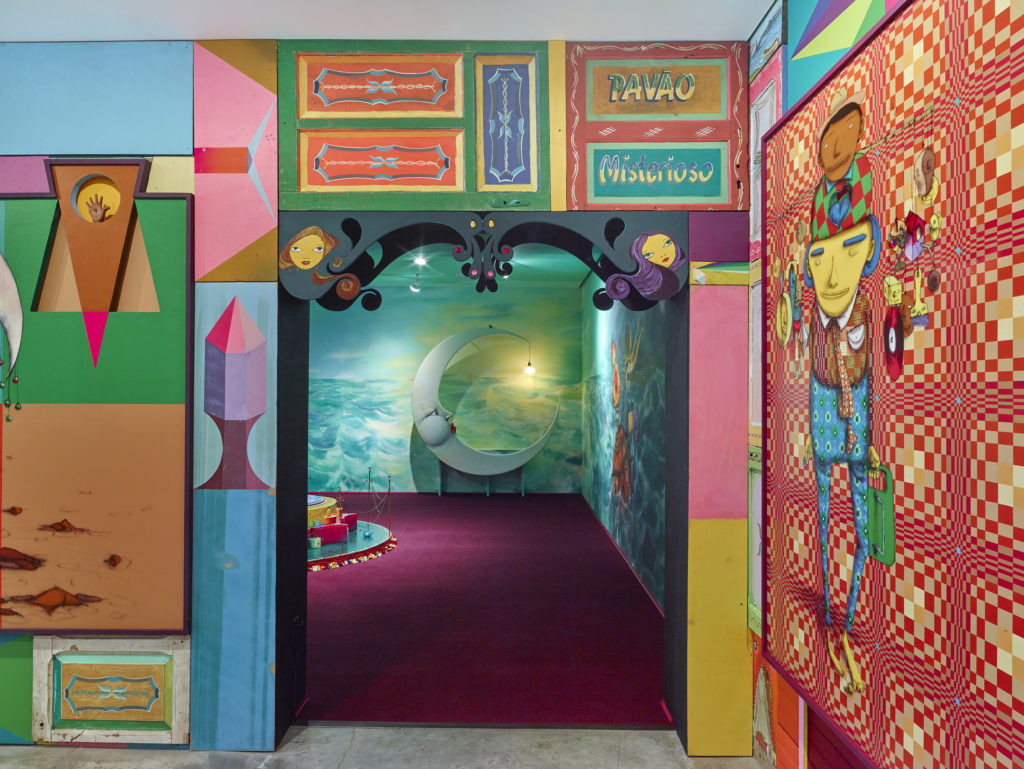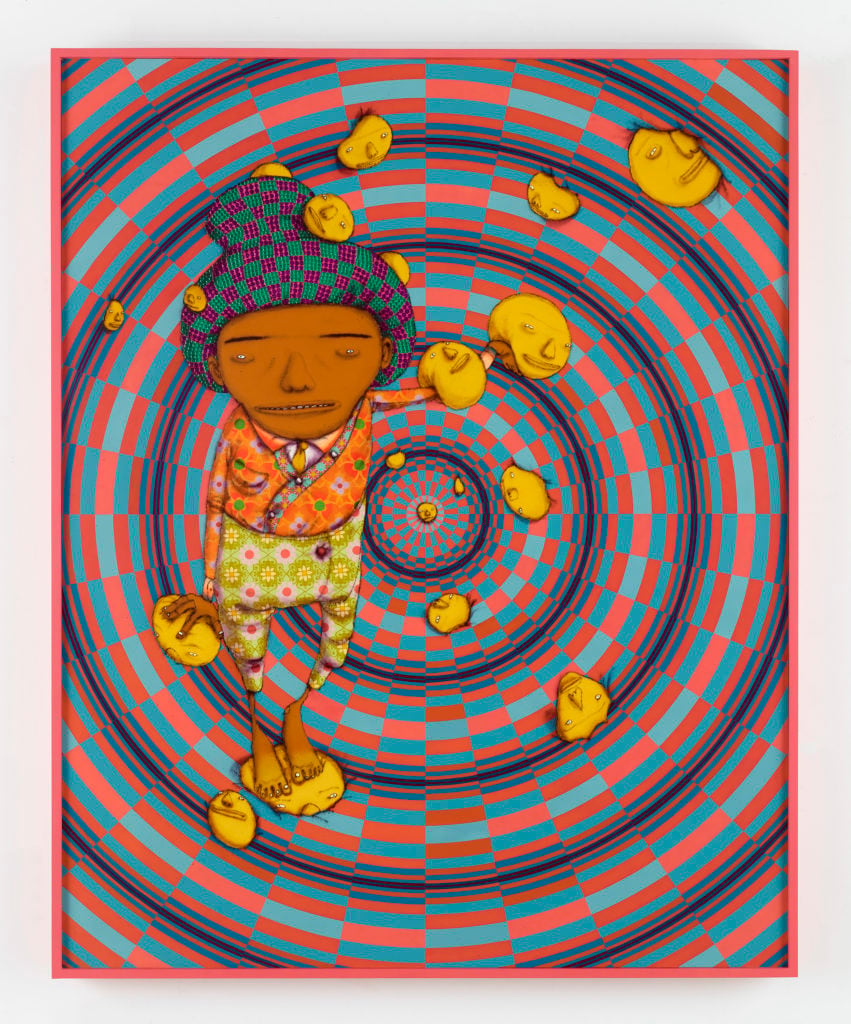On View
Gallery Hopping: OSGEMEOS Brings Street Culture Into Chelsea
With the group, it's always a family affair.

With the group, it's always a family affair.

Rain Embuscado

Brazilian brothers Otavio and Gustavo Pandolfo, better known as OSGEMEOS, were given a little under a month to execute their takeover of Lehmann Maupin’s space in New York’s Chelsea neighborhood. In that time, the duo transformed the spaces into a pastel-hued wonderland, covering virtually every inch with radiant illustrations, vivid multimedia sculptures, and fully-functioning boomboxes. “Silence of the Music,” which runs through October 22, marks their debut show with the gallery—and they went big.
The gallery’s liaison, Jennifer Mora, told artnet News during a walk-through this past Sunday that the show attracted over a thousand guests during opening weekend, adding that the number was unprecedented. Mora attributes this to the artists’ curatorial approach. “It’s important to them that people who don’t come to Chelsea can come in and really connect,” Mora said. “There’s something here for everyone: children and adults.”
With OSGEMEOS, it’s a family affair. Over in their “Boombox Room,” the art duo’s younger sister sketched doodles on their paintings. And the brothers also incorporated their mother’s hand-woven portraits into the show. Adjacent to the “Moon Room,” another brother engineered a mechanical contraption that, once turned on, plays a violin and drums among other instruments.
It’s worth noting that OSGEMEOS are part of a long line of street artists who have taken their work into museums and galleries. A recent and memorable instance of this is a monumental 2014 installation at the Brooklyn Museum by American street artist Swoon. “Submerged Motherlands,” as the show was titled, filled the museum’s rotunda gallery with crates, cardboard illustrations, and a giant, ramshackle ship.

OSGEMEOS, O Sonho Feliz (The Happy Dream) (2016). Courtesy Max Yawney | Lehmann Maupin.
OSGEMEOS’s immersive, multi-sensory installation certainly stuns. “Silence of the Music” is not a presentation of the duo’s evolution per se, but rather a demonstration of what unexpected things can happen when street artists are invited inside the gallery, rather than excluded from it.